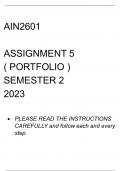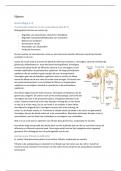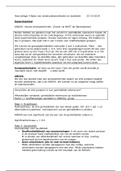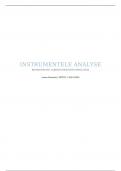Inhoudsopgave
1 Ouderschap onder druk?............................................................................................................................. 6
1.1 Onderkennen, verwerken en aanvaarden......................................................................................................6
1.1.1 Ervaring van de ouders...........................................................................................................................6
1.1.2 Vier theoretische modellen....................................................................................................................6
1.1.3 Levend Verlies (Manu Keirse).................................................................................................................9
1.1.4 Parents of children with disabilities: resilience, coping and future expectations (Tali Heiman)...........9
1.1.5 Aandacht voor hulpverleners...............................................................................................................10
1.2 Gezinsfunctioneren en opvoeden.................................................................................................................11
1.2.1 Mogelijke opdeling van hulpvragen.....................................................................................................11
1.2.2 Theoretische modellen.........................................................................................................................12
1.2.3 Studie....................................................................................................................................................16
1.2.4 Magenta-Workshops............................................................................................................................16
1.2.5 Aandachtspunten voor hulpverleners..................................................................................................17
1.3 Ondersteunen van gezinnen.........................................................................................................................17
1.3.1 Ondersteuning gericht op FQOL: family-centered werken..................................................................17
1.3.2 Studie....................................................................................................................................................17
1 Volwaardig burgerschap, inclusie en belonging..........................................................................................19
1.1 Inclusie..........................................................................................................................................................19
1.2 Inclusie en volwaardig burgerschap.............................................................................................................20
1.2.1 Studie....................................................................................................................................................20
1.2.2 Studie....................................................................................................................................................21
1.2.3 Eenzaamheid.........................................................................................................................................21
1.3 Belonging (universeel concept)....................................................................................................................22
2 Kwaliteit van leven.................................................................................................................................... 22
2.1 Basisprincipes...............................................................................................................................................22
2.2 Toepassingen................................................................................................................................................23
3 Empowerment, emancipatie en zelfbepaling............................................................................................. 23
3.1 Zelfdeterminatietheorie (Deci & Ryan)........................................................................................................24
4 Persoonsgerichte en vraaggestuurde ondersteuning..................................................................................24
4.1 Supportsmodel.............................................................................................................................................25
4.2 Ondersteuningsmodel (specifieker model)...................................................................................................25
4.2.1 5-stappen-model van Thompson (specifiek model).............................................................................25
4.2.2 Indicatoren van persoonsgerichte ondersteuning...............................................................................26
1 Interactionele benadering......................................................................................................................... 27
2 Leerprincipes............................................................................................................................................ 28
2.1 Leertheoretische principes...........................................................................................................................28
2.1.1 Chaining................................................................................................................................................28
2.1.2 Shaping.................................................................................................................................................29
2.1.3 Generalisatie.........................................................................................................................................29
2.1.4 Fading....................................................................................................................................................29
2.1.5 Samenvatting principes........................................................................................................................29
1
, 2.2 Ontwikkelingspsychologische benadering (globalere visie).........................................................................30
2.2.1 Ideeën die vertrekken vanuit ontwikkelingspsychologische visie........................................................31
2.2.2 Voorbeelden van uitgewerkte stappenlijsten......................................................................................31
2.3 Cognitieve informatieverwerking.................................................................................................................31
2.3.1 Continu proces van reflectie en regulatie............................................................................................31
2.3.2 Principes................................................................................................................................................32
3 Algemene principes................................................................................................................................... 32
4 Reflecties.................................................................................................................................................. 33
1 Communicatie........................................................................................................................................... 34
1.1 Interactionele benadering............................................................................................................................34
1.1.1 Individugebonden factoren..................................................................................................................34
1.1.2 Contextgebonden factoren...................................................................................................................34
1.1.3 Verwachte outcomes individu-omgeving.............................................................................................34
1.2 Typering van communicatief gedrag...........................................................................................................34
1.2.1 Vorm van communicatie.......................................................................................................................35
1.2.2 Functies van communicatie..................................................................................................................35
1.2.3 Niveaus van communicatie...................................................................................................................35
1.3 Inzicht in communicatief functioneren.........................................................................................................36
1.3.1 Communicatiematrix............................................................................................................................36
2 Ondersteunde communicatie.................................................................................................................... 37
2.1 Ondersteunde communicatie van pre- en protosymbolische communicatie...............................................38
2.1.1 Communicatie stimuleren....................................................................................................................38
2.1.2 Omgeving afstemmen..........................................................................................................................38
2.1.3 Verduidelijking bieden..........................................................................................................................38
2.1.4 Hulpmiddelen.......................................................................................................................................38
2.2 Ondersteunde communicatie van protosymbolische en symbolische communicatie..................................39
2.2.1 Communicatie stimuleren....................................................................................................................39
2.2.2 Omgeving afstemmen..........................................................................................................................39
2.2.3 Verduidelijking bieden.........................................................................................................................39
2.2.4 Hulpmiddelen.......................................................................................................................................39
3 Reflectie.................................................................................................................................................... 40
1 Fasen van sociaal-emotionele ontwikkeling...............................................................................................41
1.1 Adaptatiefase (0-6 maanden)......................................................................................................................41
1.1.1 Casus.....................................................................................................................................................41
1.1.2 Kenmerken adaptatiefase.....................................................................................................................41
1.2 Eerste socialisatiefase (6-18 maanden).......................................................................................................42
1.2.1 Casus.....................................................................................................................................................42
1.2.2 Kenmerken............................................................................................................................................42
1.2.3 Vormen van onveilige hechting............................................................................................................43
1.3 Eerste individuatiefase (18-36 maanden)....................................................................................................43
1.3.1 Casus.....................................................................................................................................................43
1.3.2 Kenmerken............................................................................................................................................44
1.3.3 Onderzoek.............................................................................................................................................44
1.4 Identificatiefase (3-7 jaar)............................................................................................................................45
1.5 Realiteitsbewustwordingsfase (7-12 jaar)...................................................................................................45
1.5.1 Kerntaak van 2e blok.............................................................................................................................45
2
, 1.5.2 Zelfconcept en zelfwaardering.............................................................................................................45
1.5.3 Zelfdeterminatietheorie.......................................................................................................................46
1.5.4 Kerntaken..............................................................................................................................................46
1.5.5 Sociale competenties............................................................................................................................47
1.6 Puberteit.......................................................................................................................................................48
1.6.1 Kenmerken............................................................................................................................................48
1.7 Tweede individuatiefase...............................................................................................................................48
1.7.1 Kenmerken van 3e blok in leven...........................................................................................................49
1.7.2 Kerntaak................................................................................................................................................49
1.8 Opmerking....................................................................................................................................................49
1 Definitie.................................................................................................................................................... 50
2 Anatomie van hersenen............................................................................................................................ 50
3 Oorzaken van NAH.................................................................................................................................... 50
4 Coma........................................................................................................................................................ 51
5 Gevolgen van niet-aangeboren hersenletsel en begeleidingstips................................................................51
5.1 Fysieke stoornissen en beperkingen.............................................................................................................52
5.2 Cognitieve problemen..................................................................................................................................52
5.3 Beperkingen in communicatie......................................................................................................................52
5.4 Emotionele problemen.................................................................................................................................53
5.5 Gedragsproblemen.......................................................................................................................................53
5.6 Sociale gevolgen...........................................................................................................................................53
1 Zelfzorg..................................................................................................................................................... 54
1.1 Technologie..................................................................................................................................................54
1.1.1 E-society................................................................................................................................................54
1.1.2 Twee centrale begrippen......................................................................................................................55
1.1.3 Usability pyramid..................................................................................................................................55
1.1.4 Problemen............................................................................................................................................56
1.1.5 Onderzoek.............................................................................................................................................56
1.2 Modellen om na te denken over zelfzorg.....................................................................................................56
1.2.1 Modellen die focussen op geloof en intenties.....................................................................................57
1.2.2 Modellen die focussen op assessment, selectie, implementatie en evaluatie....................................58
2 Eigen gezin en sociaal netwerk.................................................................................................................. 58
2.1 Mantelzorgers..............................................................................................................................................59
2.1.1 Enkele cijfers.........................................................................................................................................59
2.1.2 PAB-budget...........................................................................................................................................59
3 Formele netwerk....................................................................................................................................... 59
4 Ondersteuning: verschillende lagen........................................................................................................... 60
1 Verklaringen van positieve en negatieve attitudes.....................................................................................61
2 Verdragen over Rechten van Personen met een Handicap.........................................................................61
2.1 Verdragen i.v.m. maatschappelijke positie van mensen met een handicap................................................62
3
, 2.2 Grondbeginselen van het verdrag................................................................................................................62
2.3 Stilstaan bij beïnvloeden van beeldvorming................................................................................................62
3 Strategieën gericht op positieve beeldvorming..........................................................................................62
4
1 Ouderschap onder druk?............................................................................................................................. 6
1.1 Onderkennen, verwerken en aanvaarden......................................................................................................6
1.1.1 Ervaring van de ouders...........................................................................................................................6
1.1.2 Vier theoretische modellen....................................................................................................................6
1.1.3 Levend Verlies (Manu Keirse).................................................................................................................9
1.1.4 Parents of children with disabilities: resilience, coping and future expectations (Tali Heiman)...........9
1.1.5 Aandacht voor hulpverleners...............................................................................................................10
1.2 Gezinsfunctioneren en opvoeden.................................................................................................................11
1.2.1 Mogelijke opdeling van hulpvragen.....................................................................................................11
1.2.2 Theoretische modellen.........................................................................................................................12
1.2.3 Studie....................................................................................................................................................16
1.2.4 Magenta-Workshops............................................................................................................................16
1.2.5 Aandachtspunten voor hulpverleners..................................................................................................17
1.3 Ondersteunen van gezinnen.........................................................................................................................17
1.3.1 Ondersteuning gericht op FQOL: family-centered werken..................................................................17
1.3.2 Studie....................................................................................................................................................17
1 Volwaardig burgerschap, inclusie en belonging..........................................................................................19
1.1 Inclusie..........................................................................................................................................................19
1.2 Inclusie en volwaardig burgerschap.............................................................................................................20
1.2.1 Studie....................................................................................................................................................20
1.2.2 Studie....................................................................................................................................................21
1.2.3 Eenzaamheid.........................................................................................................................................21
1.3 Belonging (universeel concept)....................................................................................................................22
2 Kwaliteit van leven.................................................................................................................................... 22
2.1 Basisprincipes...............................................................................................................................................22
2.2 Toepassingen................................................................................................................................................23
3 Empowerment, emancipatie en zelfbepaling............................................................................................. 23
3.1 Zelfdeterminatietheorie (Deci & Ryan)........................................................................................................24
4 Persoonsgerichte en vraaggestuurde ondersteuning..................................................................................24
4.1 Supportsmodel.............................................................................................................................................25
4.2 Ondersteuningsmodel (specifieker model)...................................................................................................25
4.2.1 5-stappen-model van Thompson (specifiek model).............................................................................25
4.2.2 Indicatoren van persoonsgerichte ondersteuning...............................................................................26
1 Interactionele benadering......................................................................................................................... 27
2 Leerprincipes............................................................................................................................................ 28
2.1 Leertheoretische principes...........................................................................................................................28
2.1.1 Chaining................................................................................................................................................28
2.1.2 Shaping.................................................................................................................................................29
2.1.3 Generalisatie.........................................................................................................................................29
2.1.4 Fading....................................................................................................................................................29
2.1.5 Samenvatting principes........................................................................................................................29
1
, 2.2 Ontwikkelingspsychologische benadering (globalere visie).........................................................................30
2.2.1 Ideeën die vertrekken vanuit ontwikkelingspsychologische visie........................................................31
2.2.2 Voorbeelden van uitgewerkte stappenlijsten......................................................................................31
2.3 Cognitieve informatieverwerking.................................................................................................................31
2.3.1 Continu proces van reflectie en regulatie............................................................................................31
2.3.2 Principes................................................................................................................................................32
3 Algemene principes................................................................................................................................... 32
4 Reflecties.................................................................................................................................................. 33
1 Communicatie........................................................................................................................................... 34
1.1 Interactionele benadering............................................................................................................................34
1.1.1 Individugebonden factoren..................................................................................................................34
1.1.2 Contextgebonden factoren...................................................................................................................34
1.1.3 Verwachte outcomes individu-omgeving.............................................................................................34
1.2 Typering van communicatief gedrag...........................................................................................................34
1.2.1 Vorm van communicatie.......................................................................................................................35
1.2.2 Functies van communicatie..................................................................................................................35
1.2.3 Niveaus van communicatie...................................................................................................................35
1.3 Inzicht in communicatief functioneren.........................................................................................................36
1.3.1 Communicatiematrix............................................................................................................................36
2 Ondersteunde communicatie.................................................................................................................... 37
2.1 Ondersteunde communicatie van pre- en protosymbolische communicatie...............................................38
2.1.1 Communicatie stimuleren....................................................................................................................38
2.1.2 Omgeving afstemmen..........................................................................................................................38
2.1.3 Verduidelijking bieden..........................................................................................................................38
2.1.4 Hulpmiddelen.......................................................................................................................................38
2.2 Ondersteunde communicatie van protosymbolische en symbolische communicatie..................................39
2.2.1 Communicatie stimuleren....................................................................................................................39
2.2.2 Omgeving afstemmen..........................................................................................................................39
2.2.3 Verduidelijking bieden.........................................................................................................................39
2.2.4 Hulpmiddelen.......................................................................................................................................39
3 Reflectie.................................................................................................................................................... 40
1 Fasen van sociaal-emotionele ontwikkeling...............................................................................................41
1.1 Adaptatiefase (0-6 maanden)......................................................................................................................41
1.1.1 Casus.....................................................................................................................................................41
1.1.2 Kenmerken adaptatiefase.....................................................................................................................41
1.2 Eerste socialisatiefase (6-18 maanden).......................................................................................................42
1.2.1 Casus.....................................................................................................................................................42
1.2.2 Kenmerken............................................................................................................................................42
1.2.3 Vormen van onveilige hechting............................................................................................................43
1.3 Eerste individuatiefase (18-36 maanden)....................................................................................................43
1.3.1 Casus.....................................................................................................................................................43
1.3.2 Kenmerken............................................................................................................................................44
1.3.3 Onderzoek.............................................................................................................................................44
1.4 Identificatiefase (3-7 jaar)............................................................................................................................45
1.5 Realiteitsbewustwordingsfase (7-12 jaar)...................................................................................................45
1.5.1 Kerntaak van 2e blok.............................................................................................................................45
2
, 1.5.2 Zelfconcept en zelfwaardering.............................................................................................................45
1.5.3 Zelfdeterminatietheorie.......................................................................................................................46
1.5.4 Kerntaken..............................................................................................................................................46
1.5.5 Sociale competenties............................................................................................................................47
1.6 Puberteit.......................................................................................................................................................48
1.6.1 Kenmerken............................................................................................................................................48
1.7 Tweede individuatiefase...............................................................................................................................48
1.7.1 Kenmerken van 3e blok in leven...........................................................................................................49
1.7.2 Kerntaak................................................................................................................................................49
1.8 Opmerking....................................................................................................................................................49
1 Definitie.................................................................................................................................................... 50
2 Anatomie van hersenen............................................................................................................................ 50
3 Oorzaken van NAH.................................................................................................................................... 50
4 Coma........................................................................................................................................................ 51
5 Gevolgen van niet-aangeboren hersenletsel en begeleidingstips................................................................51
5.1 Fysieke stoornissen en beperkingen.............................................................................................................52
5.2 Cognitieve problemen..................................................................................................................................52
5.3 Beperkingen in communicatie......................................................................................................................52
5.4 Emotionele problemen.................................................................................................................................53
5.5 Gedragsproblemen.......................................................................................................................................53
5.6 Sociale gevolgen...........................................................................................................................................53
1 Zelfzorg..................................................................................................................................................... 54
1.1 Technologie..................................................................................................................................................54
1.1.1 E-society................................................................................................................................................54
1.1.2 Twee centrale begrippen......................................................................................................................55
1.1.3 Usability pyramid..................................................................................................................................55
1.1.4 Problemen............................................................................................................................................56
1.1.5 Onderzoek.............................................................................................................................................56
1.2 Modellen om na te denken over zelfzorg.....................................................................................................56
1.2.1 Modellen die focussen op geloof en intenties.....................................................................................57
1.2.2 Modellen die focussen op assessment, selectie, implementatie en evaluatie....................................58
2 Eigen gezin en sociaal netwerk.................................................................................................................. 58
2.1 Mantelzorgers..............................................................................................................................................59
2.1.1 Enkele cijfers.........................................................................................................................................59
2.1.2 PAB-budget...........................................................................................................................................59
3 Formele netwerk....................................................................................................................................... 59
4 Ondersteuning: verschillende lagen........................................................................................................... 60
1 Verklaringen van positieve en negatieve attitudes.....................................................................................61
2 Verdragen over Rechten van Personen met een Handicap.........................................................................61
2.1 Verdragen i.v.m. maatschappelijke positie van mensen met een handicap................................................62
3
, 2.2 Grondbeginselen van het verdrag................................................................................................................62
2.3 Stilstaan bij beïnvloeden van beeldvorming................................................................................................62
3 Strategieën gericht op positieve beeldvorming..........................................................................................62
4










